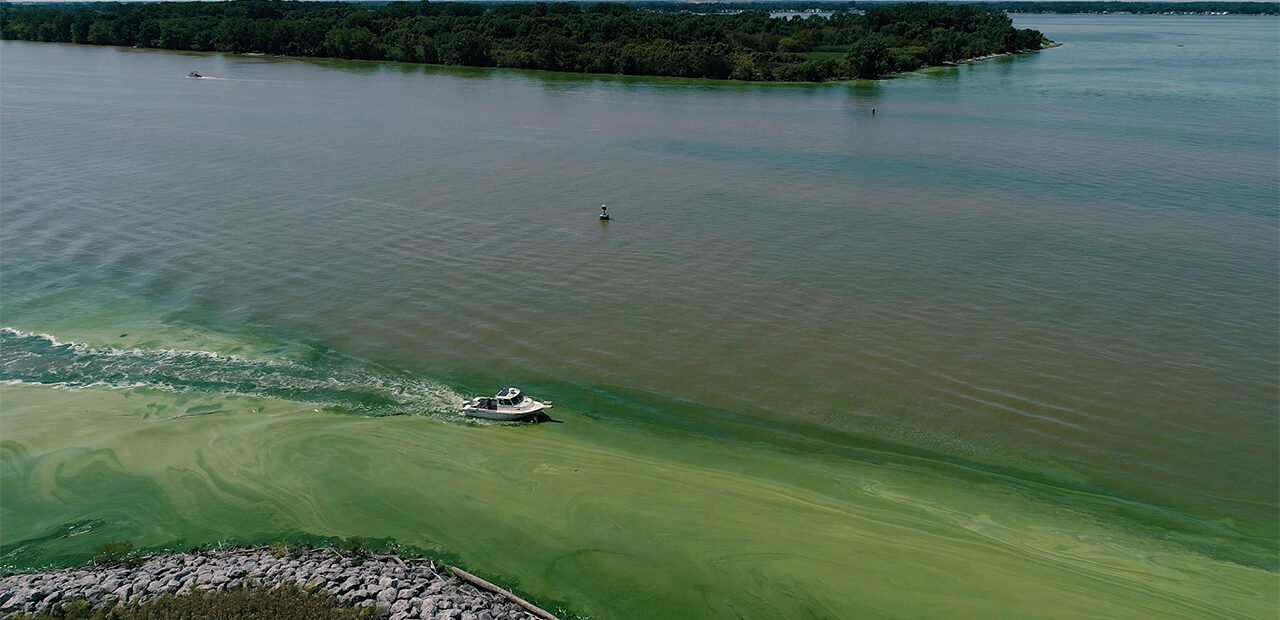A new report reveals that Great Lakes and St. Lawrence communities will spend nearly $2 billion over next five years to combat coastal damages from climate change.
A survey of 241 cities, villages, and other jurisdictions along the Great Lakes and St. Lawrence River shows that coastal damage from climate change will cost at least $1.94 billion over the next five years, with shoreline communities having already spent $878 million over the past two years.
“While water levels in the Great Lakes-St. Lawrence River basin are naturally variable with cyclical highs and lows, climate change is exacerbating these fluctuations, with water levels reaching record highs in recent years,” said Mayor Walter Sendzik, chair of Great Lakes and St. Lawrence Cities Initiative, a binational coalition of over 120 U.S. and Canadian mayors and local officials working to advance the protection and restoration of the Great Lakes and St. Lawrence River.
“High water levels, paired with severe storm events and wave action, are leading to greater erosion and flooding that threaten public and private properties, critical infrastructure, and recreation and tourism amenities in shoreline communities.”
This new information illustrates the scope and magnitude of climate impacts on the Great Lakes and St. Lawrence River and the need for increased federal assistance for coastal communities struggling to respond to threats to critical infrastructure and assets along their shorelines. The Great Lakes and St. Lawrence Cities Initiative, along with other regional organizations, are calling for funding in an upcoming infrastructure package to enable Great Lakes states and local governments to prepare for, respond to, and build resilience to current and future impacts from high lake levels and severe weather events.
The eight Great Lakes states have over 4,500 miles of shoreline, nearly as much as all the states bordering on the Atlantic, Gulf of Mexico, and west coasts combined. A substantial, targeted investment in coastal resilience in the Great Lakes is warranted and will generate substantial benefits for the environmental and economic health of shoreline communities in the region.
Survey findings
Top Concerns and Priorities
- More than 95% of respondents were highly or moderately concerned about coastal issues facing their community.
- More than 80% of respondents reported water level and flooding forecasts to be very important to their jurisdiction’s work on coastal planning.
Communication and Engagement
- Nearly 99% of respondents indicated a consistent or increasing public interest in addressing coastal issues.
- More than 90% of respondents indicated an interest in participating in future training, capacity building, or partnership development opportunities related to coastal management.
Resources and Support
- US and Canadian survey respondents indicated a combined financial need of $1.94 billion USD over the next five years to respond to coastal challenges.
- Over the past two years, respondents indicated spending $878 million USD to respond to coastal challenges.
- Only 27% of jurisdictions rated their staff as being highly knowledgeable of coastal issues, and only 11% reported having a high level of capacity to respond to such issues.
- Funding for mitigation projects and planning is a high priority for communities; however, existing funding opportunities do not meet this need for most communities to respond to coastal issues.
- Communities noted support from state and federal agencies as very important to their efforts to respond to coastal issues; however, current support is not meeting the needs of coastal communities.
Planning and Response
- Most communities are already taking action to complete comprehensive planning updates; collect data to inform their decision-making; update zoning codes and ordinances; and implement coastal resilience projects / practices.
- Only half of respondents are currently incorporating strategies to anticipate, accommodate, and adapt to changing coastal conditions in their planning efforts and noted a lack of technical expertise, low staff capacity, and a lack of funding as primary barriers to consideration.
- Of a range of coastal resilience planning activities, communities were severely behind in their efforts to develop climate action plans, with only 30% of respondents having started or completed progress. Of those who had not taken action, 25% indicated that developing a climate action plan was not a priority for their community.
- Of activities that were not already taking place, communities rated vulnerability assessments and coastal resilience projects as the most important to act on.
The Coastal Resilience Needs Assessment Survey was completed in partnership with the University of Illinois Applied Research Institute and collected information from March through May 2021. The survey received nearly 300 responses from 241 jurisdictions across all eight U.S. states and two Canadian provinces that border the Great Lakes and St. Lawrence River.
Featured image: Harmful algal bloom in western Lake Erie (Great Lakes Now).









